Nestled in the southern part of the Korean peninsula, South Korea has been creating a significant global fan base through Korean Dramas and K-pop in recent years. The country is also known for glamour-filled creative performances, incredible skincare routines and so much more!
What many fail to acknowledge is how much of a fascinating travel destination South Korea is!
There’s so much to explore from stunning and diverse natural landscapes, national parks, and volcanic islands like the famed Jeju Island to refined modern cityscapes like Seoul – not forgetting the incredible Korean food and drink experiences!
Without further ado, let’s get on with our recommended list of places to include in your South Korea Itinerary!
1. Hanok Village
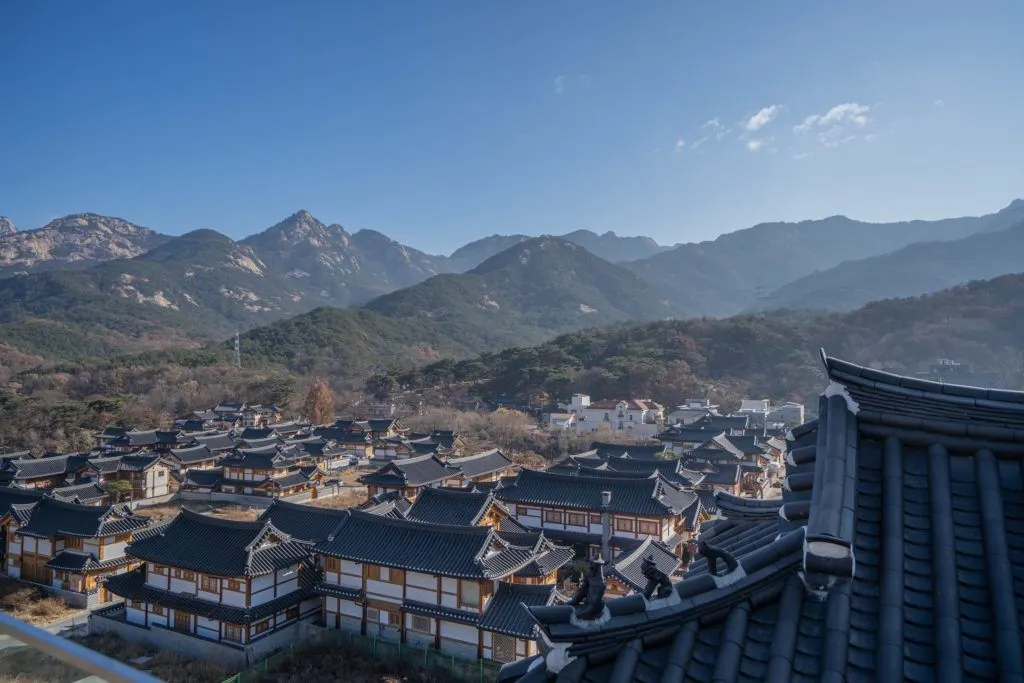
The Bukchon Hanok Village is one of the most famous tourist attractions in Seoul. Perched atop a hill between several royal shrines and historical palaces, this traditional village served as a residential area for the noble crowd of Korea in the Joseon Dynasty.
Travellers attest to having a good time exploring the streets of Hanok Village. Unravelling the incredible history and cultural significance of these streets while observing traditional architecture is something to look forward to here.
Visit the Gahoe Museum – which focuses on highlighting unique traditional aspects, as well as the intriguing historical artefacts left by the Joseon Dynasty.
The Seoul Intangible Cultural Heritage Centre should be your next stop – this is the ideal place to immerse in the traditional values and arts of South Korea.
You can also witness the traditional practice of gold leaf printing here; a unique Korean technique used to print gold into a fabric.
Hanok Village is a definite must-add to your South Korea Itinerary.
2. Jeju Island
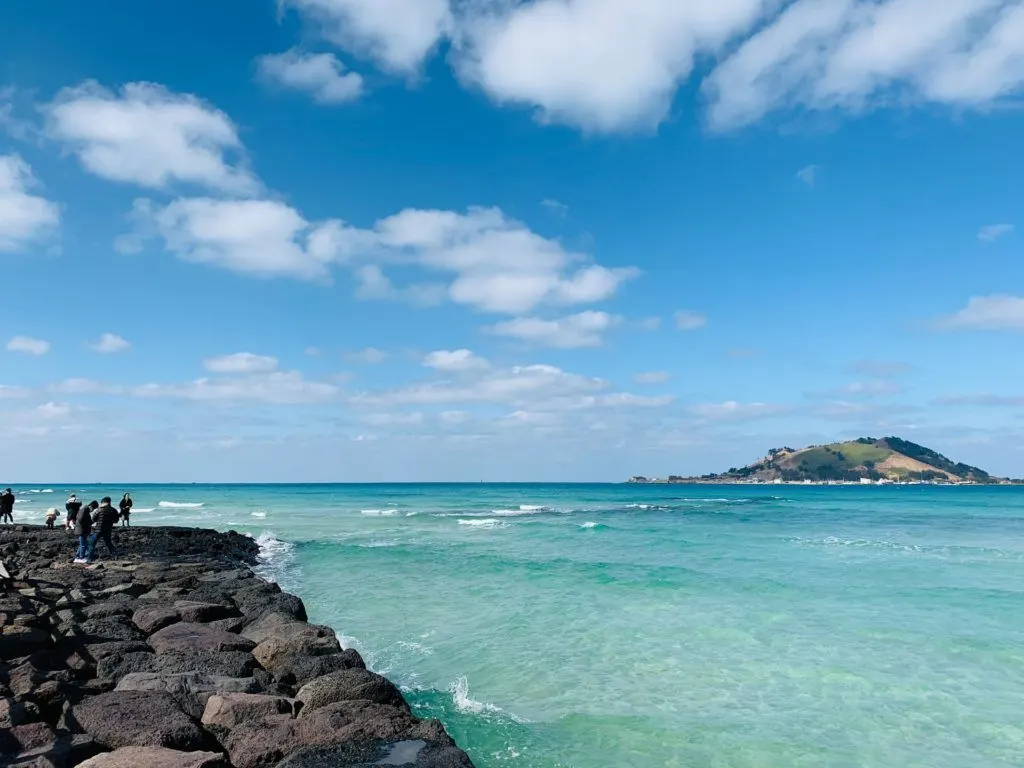
Located within the Jeju province, Jeju island covers an approximate area of 1800 sq kilometres with a residential population of 690,000, making it one of the largest Korean islands.
Jeju Island was formed by an underwater volcano that erupted approximately 2 million years ago. And it hosts a lush, verdant landscape surrounded by a white sandy coast and turquoise blue ocean that looks unbelievably picturesque.
Hyeopjae Beach and Woljeongri Beach are the star beaches on the island as both are perfect for a beach day out. You can also visit the Jeju Volcanic islands and the Lava tubes – deemed as one of the most beautiful UNESCO sites in the world.
Jeju Island is home to other UNESCO sites too. Especially, national parks like the Hallasan National Park, located on Hallasan Mountain offering breathtaking natural hiking trails for park visitors.
Seongsan Ilchulbong Tuff Cone – another UNESCO site, is the ideal place to witness one of the most beautiful sunrises.
No trip to Jeju Island will be complete without doing some island hopping. Udo, Marado, and Chagwido are some of the smaller islands located in close proximity.
Finally, if you love food as much as enjoying a paradise holiday, then you must take some time to go on a Jeju Island gastronomy adventure. The Jeju black pork dish is a local delicacy that has won the hearts of many visitors.
And if you are looking for a romantic destination for your honeymoon, we do believe it has all the features to make your stay super romantic.
So make sure to include Jeju Island in your South Korea Itinerary!
3. Nami Island
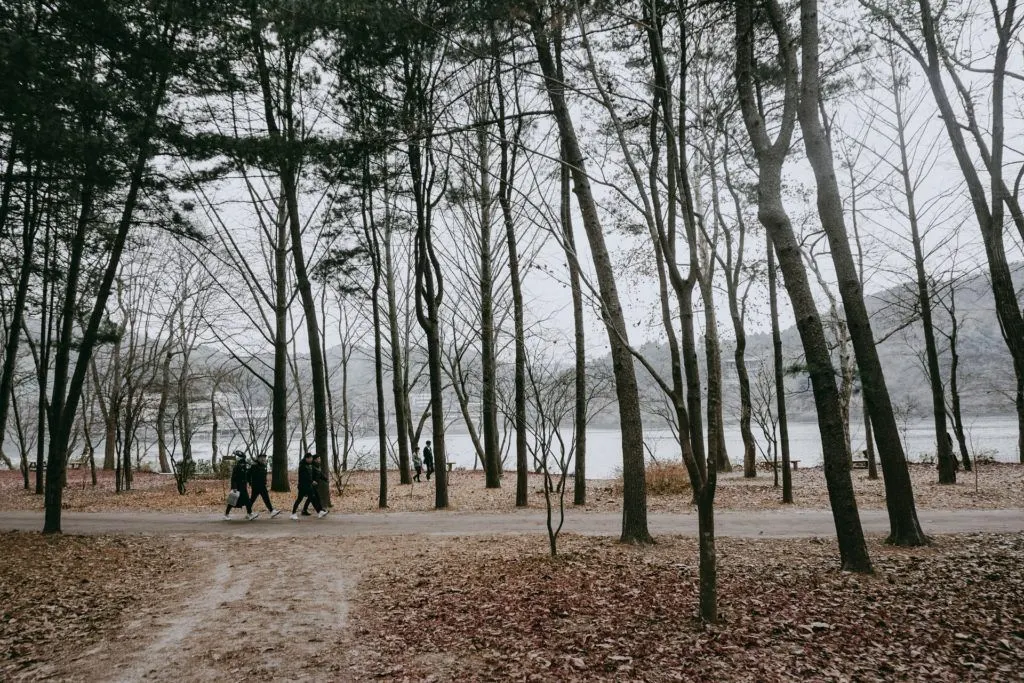
Unlike Jeju Island, located a few miles from the mainland of Korea, Nami Island is situated in the middle of the Han river in Chunceon, Gangwong-do province.
This half-moon-shaped island is home to a charming natural environment. The island was named after General Nami – who had a tragic death after being falsely accused of treason in the Joseon Dynasty.
While the history of this island has led to many spooky speculations, your focus should be more towards the scenic trails, yummy street food as well as other cultural attractions – making Nami Island a must-add to your South Korea Itinerary.
Tree lanes are a popular thing here, and there are several tree lanes for you to enjoy a stroll in. The Central Korean Pine Tree Lane and Gingko Tree Road are some of the most scenic lanes that will make your walk all the more special.
If you prefer to focus on the scenery with minimum physical effort then you can always take a bicycle or an electric tour car. It is an experience of its own.
You can also drop by the Ostrich Pen that is near the Central Korean Pine Tree Lane; this whole island is just a photographer’s dreamland.
Tranquillity and beauty are all packed in for a good day trip!
4. Han River

The Han River, also known as Hangan, is one of the main rivers in South Korea – starting from the east hillside in the peninsula of Korea and converging at Seoul. This makes it one of the main water sources for approximately 12 million South Koreans.
As this scenic river is lined with parks, cycling and strolling paths, cafes and restaurants around Seoul, there is much to engage in. If you are into water sports – perfect!
There’s a large amount of that in these waters. Windsurfing, boating, kayaking, and even epic activities like flyboarding!
But if you like engaging in activities that are mellow and maybe less wet? Then you can opt-out for a relaxing bike ride, with the river in view and scenic green surroundings.
Have a memorable camping experience amid the serene surroundings so close to Seoul, but if that is a no-go, you can always enjoy a lovely picnic instead.
To experience the beauty of this flowing beauty in its very own element, you can even join a lovely river cruise. There are many tours available with so many options and packages – which is honestly the best way to enjoy the picturesque sceneries of the Han River.
5. Seokguram Grotto
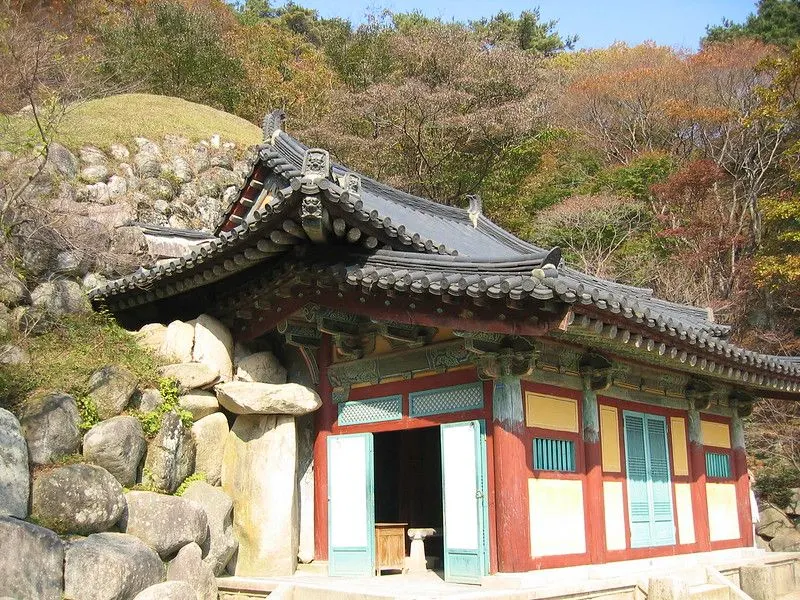
The Seokguram Grotto is one of the most religiously as well as culturally marked sites in Korea. Now, it is a hermitage that belongs to the Bulguksa temple complex. Located in Gyeongju, this incredible grotto was built by Kim Daeseong in 742.
It is now recognized as a remarkable treasure of Korea as it is home to some of the most valued stone sculptures of Buddha. The grotto is considered to be even more special for visitors thanks to its unique location as well.
The craftsmanship of the temple structure is another unique aspect we can marvel at. The intricate carvings and patterns are so mesmerising that you will find yourself deeply drawn in.
It is also home to some of the most culturally significant relics of South Korea, which you can learn about in great detail while visiting. Worth a trip? We certainly think so.
6. Seoraksan National Park
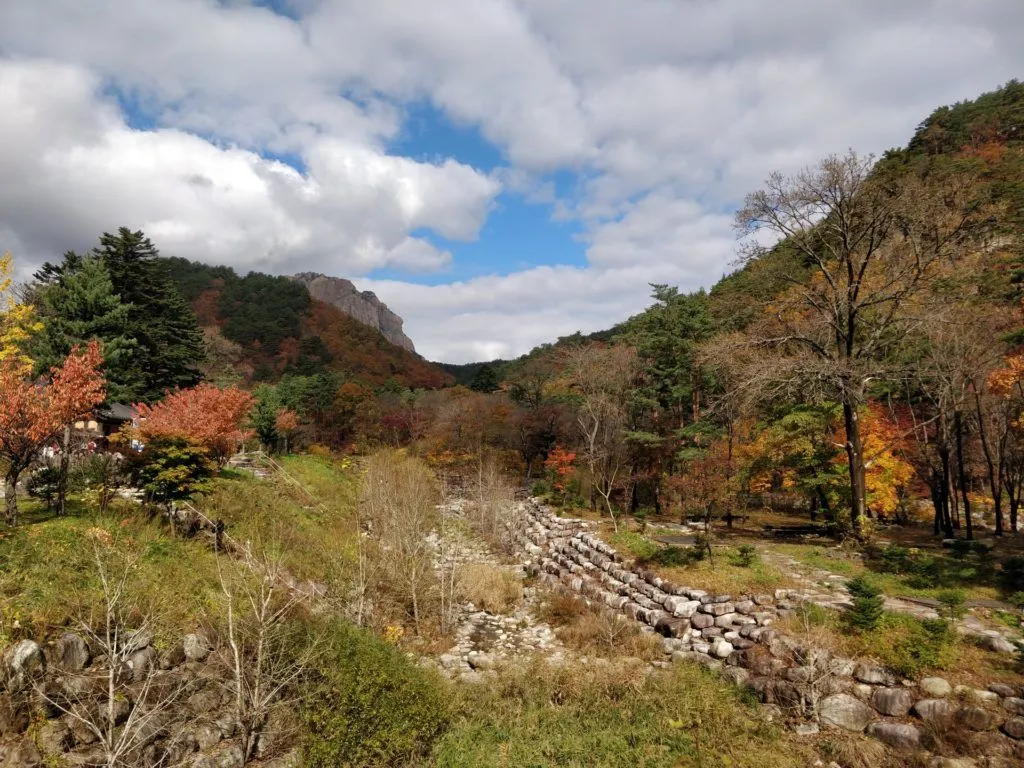
Located along the east-central part of the Korean peninsula, the Seoraksan National Park was recognized as a UNESCO biosphere reserve in 1965. This National Park stretches over an area of approximately 163 sq kilometres.
The park hosts lush verdant landscapes, mountain peaks and ridges as well as rare endemic wildlife like the Korean Musk Deer and the stunning Tristram’s Woodpecker.
All these factors add to creating a national park that attracts large crowds of wildlife and nature enthusiasts. Just 3 hours away from Seoul, this national park is an ideal place for a day trip.
During spring and summer, the national park emits the sweet subtle smell of cherry blossoms as the trees are coated in a pink hue. While immersing in its charm, you can visit the Ulsanbawi Rock – a one-of-a-kind rock formation with 6 peaks of granite – a major attraction in the national park.
Explore the epic Geumganggul Cave from where you can get an incredible view of the park. If trekking takes a little too much out of you, then there is always the scenic cable car ride – which reaches the ancient Gwongeumseong Fortress on top of the Seoraksan Mountain.
From incredible rugged climbing trails to cable car rides over stunning nature trails, the Seoraksan National Park certainly needs to be included in every traveller’s South Korea Itinerary.
7. Changdeokgung Palace
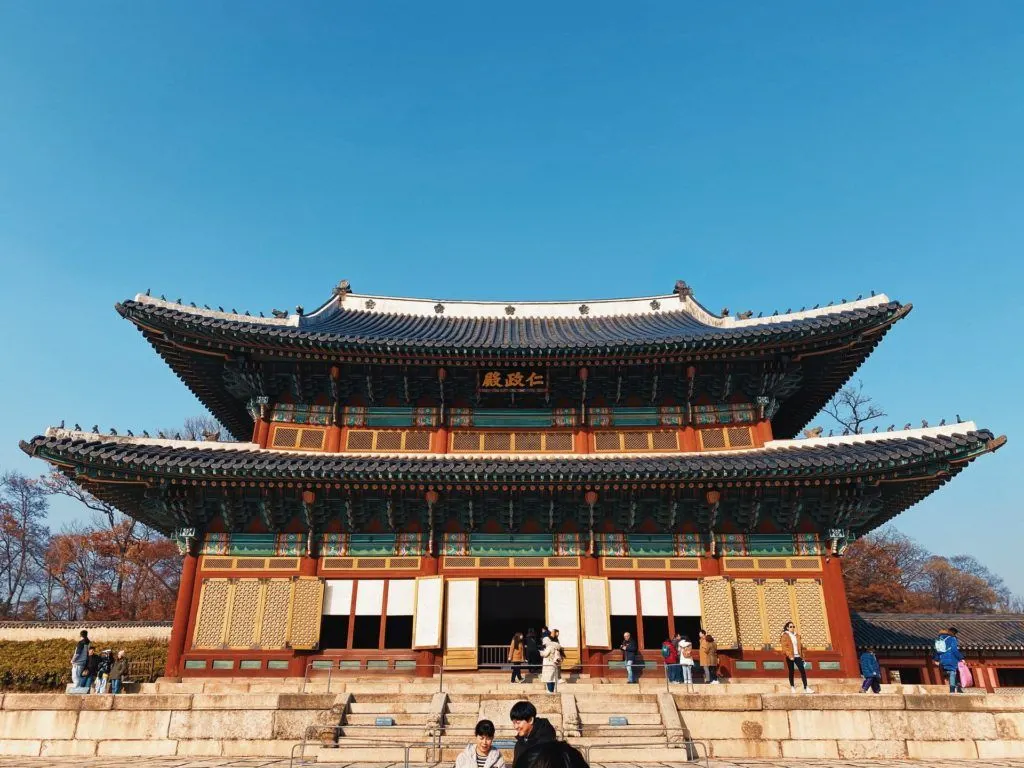
Another UNESCO world heritage site that draws in curious travellers. The Changdeokgung Palace (which directly translates to Prospering Virtue Palace) is one of the five palaces built in Seoul in the Joseon Dynasty.
Despite the heavy damage accumulated during the Japanese occupation, the Changdeokgung Palace remains one of the most popular cultural and tourist spots in South Korea.
The Changdeokgung Palace has thirteen buildings and over twenty-eight pavilions and gardens. Many travellers who have explored the lands of this royal monument speak of the incredible aged beauty that the palace premises still hold.
The Gwolnaegaksa complex, Huijeongdang hall, and not forgetting the beautifully maintained Huwon secret garden are some of the highlighted areas within the palace premises.
Huwon garden is approximately 78 acres, and it is said to occupy more than half of the whole palace landscape. Initially, the garden was said to have been built for the use of the royal family and palace women. Later on, it was entirely dedicated to the King’s private use.
The Palace is full of different halls and complexes, each with a historical story of its own. A real treasure trove for those who find pleasure in exploring the deep history as they travel.
So come prepared to spend some time in the Changdeokgung Palace and immerse in its fascinating history.
No South Korean itinerary is complete without a trip to Changdeokgung palace!
8. Haedong Yonggungsa Temple
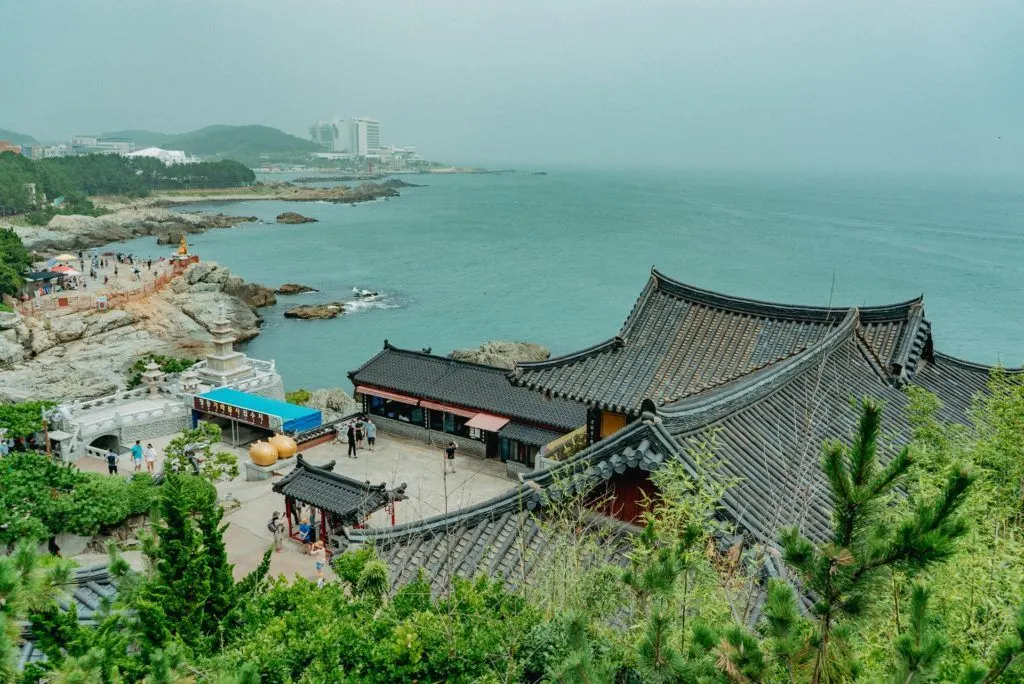
The Haedong Yonggungsa Temple has to be one of the most scenic ancient temples in South Korea. Located in Busan, this oceanside temple probably has one of the most fascinating legends attached to it.
Perched on a rugged cliff overlooking the ocean, the story goes that the temple was built in 1376 with the honourable intention of bringing relief to the nearby village suffering from a continuing drought!
Also known as Busan’s temple on the coast, it is a great place to enjoy some stunning coastal views against the green hills the temple stands on.
Although it was one of the many temples that received much damage during the Japanese invasions, it was renovated under the care and guidance of the Ungang’s monks.
If you make a very early visit during the day, you can enjoy the enchanting sunrise over the sea of Japan. The temple has a golden glow as the first rays of sunlight touch it.
Another great time to visit this sacred temple is during spring when cherry blossoms are in full bloom. It gives the temple an almost ethereal look that looks absolutely breathtaking from a distance.
9. Itaewon
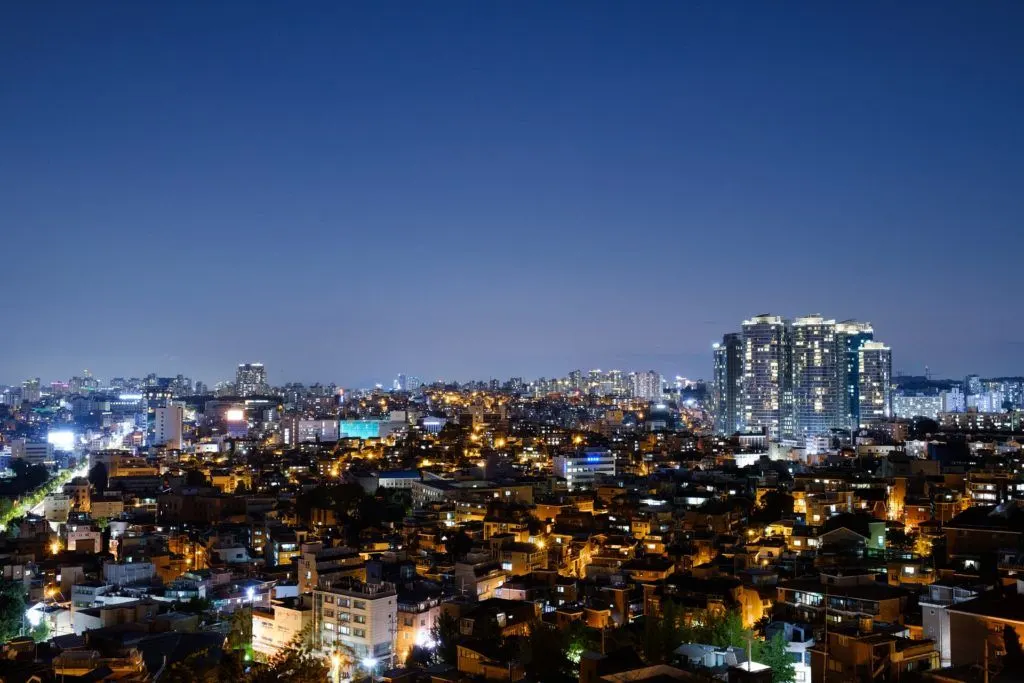
If you are looking to shake things up a bit and take a break from all the temple exploring, hiking trails and historical sightseeing, Itaewon is where you are headed!
So what awaits at this quirky party town? Let us start with shopping! Shop till your heart or wallet drops. From antiques to premium cosmetic products to high-quality electronic products, everything and anything is available here.
And even if you are not planning to buy anything -there’s nothing like window shopping in a foreign land. Also, visit the Leeum Museum. This private art museum is a harmonious existence between two vastly different eras – consisting of masterpieces born from traditional art influence and modern contemporary pieces.
Savour the mouth-watering South Korean cuisines at the many eclectic cafes, restaurants and bars that come to life as the day turns to night. But, till then, you can always visit the gorgeous Namsan Botanical Garden.
This is a park for all seasons. During spring and summer, the park is filled with blooming cherry blossom trees – this is the time the annual Cherry Blossom Festival takes place! And during autumn, the aesthetic changes to darker shades of red, orange and gold!
At nightfall, the streets of Itaewon fill up with music. We are talking about street performances, food exhibitions, and so much more! A destination worth adding to your South Korea Itinerary.
10. Korean Folk Village
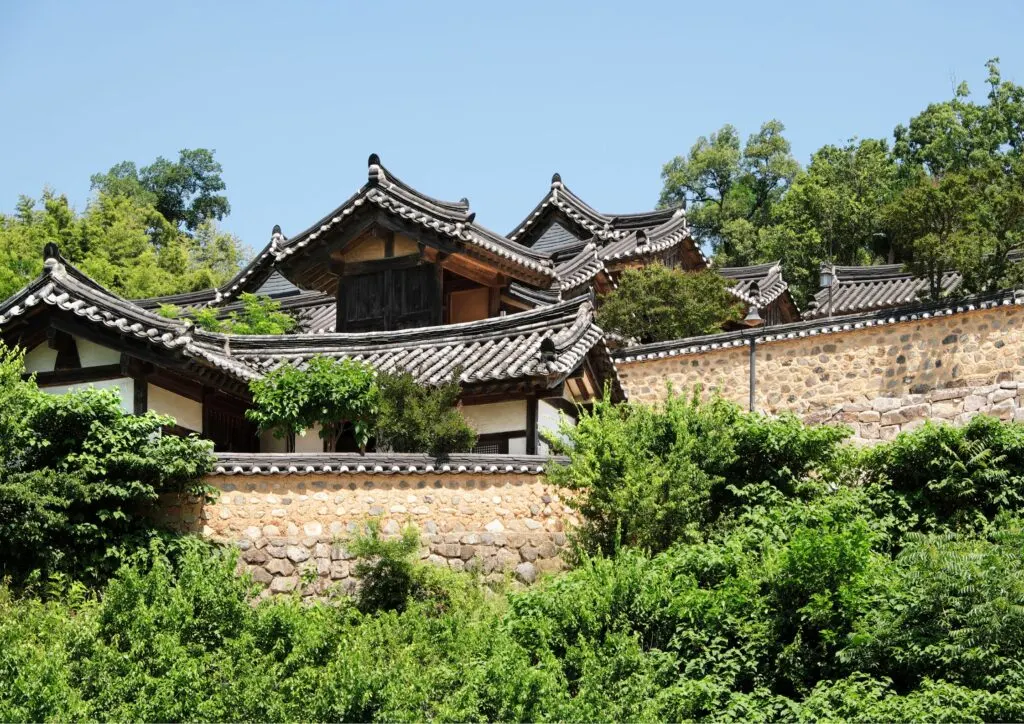
If you love Korean dramas and derive great pleasure from learning all about Korean culture, then the Korean Folk Village should be at the top of your South Korea Itinerary.
The Korean Folk Village is pretty much a real-time museum from the Joseon period. And one could say that they have indeed managed to capture the rural beauty of the bygone era successfully.
As a result, the Korean Folk Village has been used for many Korean dramas including the very popular Dae Jang Geum (2003). If you have enjoyed this Korean drama, then a day trip to the Korean Folk Village would be even more special.
The routes within the park capture the beauty and the authentic rustic village aesthetic in Korea; it will be like travelling back in time and witnessing everything you ever enjoyed watching through a screen.
Visitors can also buy craft items like bamboo ware, woodenware, and so much more.
To liven things up, travellers also get to witness and enjoy traditional performances that are held daily. Some artistic performances include the traditional weddings in the ancient era and the infamous horseback martial arts.
Try to get first-row seats while diving deep into the significance and the true meanings behind these performances, as well as their relevance at the time.
11. Andong
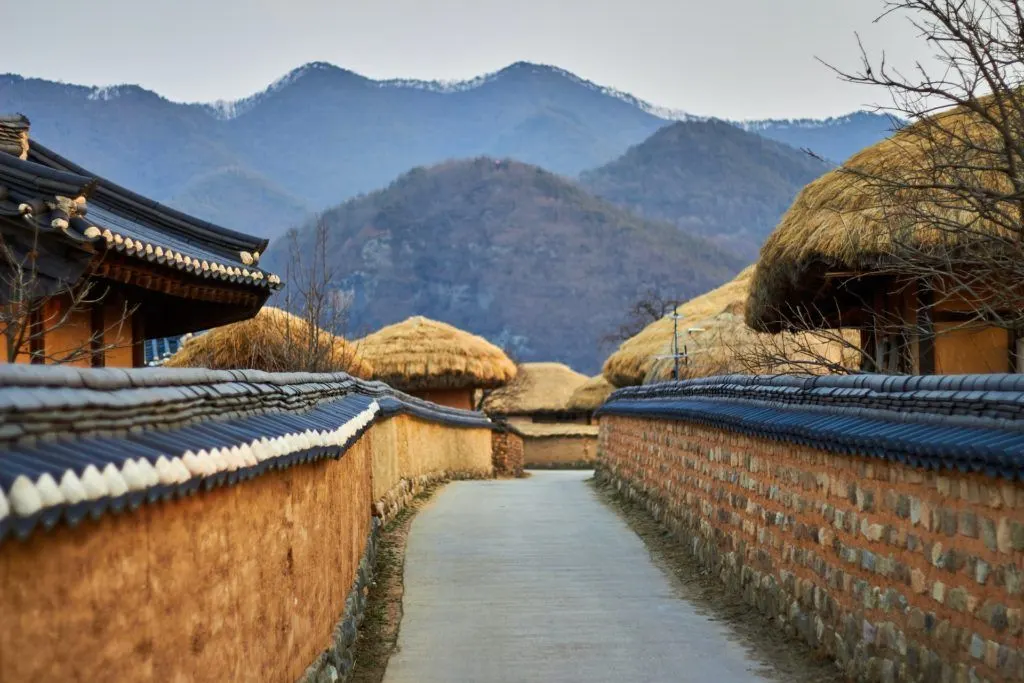
Renowned as the ‘Most Korean Place in Korea’, Andong is one of the largest cities in the northern part of the country. Andong is all about culturally aged beauty.
It’s not a replica of a rural village, but rather a city that has taken great care in preserving the many traditions, agricultural practices and way of life in Korea.
As a result, Andong has earned a reputation as the cultural capital of South Korea – and there are some incredibly interesting things you can experience here.
The Hahoe Folk Village is one of Andong’s star attractions. This nearly six centuries old rural village helps visitors get a real feel of how things happened in the Joseon Era.
Don’t forget to sample the authentic taste of Soju here. This unique recipe for Soju includes using a mix of fermented and distilled grains and rice. Something amazing as Soju should always be paired with an incredible dish.
So make sure to try the Gan Godeungeo (salted mackerel) and Jjimdalk (braised chicken and vegetable stew), which are popular among the locals of Andong.
Take a ferry to Buyongdae, where you can climb a cliff to get a rare view of the Andong landscape – especially the Hahoe Village.
If you are visiting Andong from September to October, take note to be a part of the iconic Mask Dance Festival. A two-day festival that is packed with insanely awesome activities and performances. A rare treat to any traveller exploring Andong.
With so many incredible things to do here, Andon is definitely a must-add to your South Korea Itinerary.
12. The Korean Demilitarized Zone
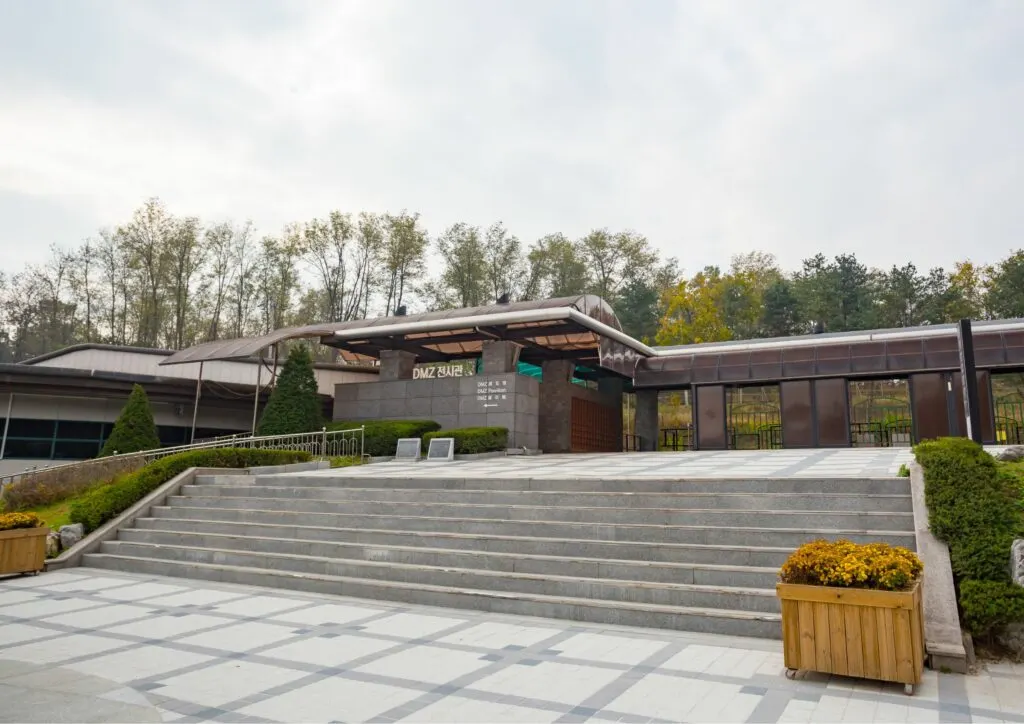
The Demilitarized Zone also known as DMZ is a strip of land running across the borders of North Korea and South Korea. The main purpose of this strip is to act as a buffer between the two borders, and it has been under the strict maintenance of both governments since 1953.
This 240 kilometres long and 4 kilometres wide strip is extremely secure, and if we are being honest, it doesn’t exactly exude a ceremonious vibe.
Ironically, it is still a popular tourist attraction in South Korea, attracting curious tourists who wish to witness this somewhat high-tension-inducing region.
Former president of the United States Bill Clinton who visited the DMZ in 1993 described it as the “scariest place on Earth”.
If you are someone who enjoys visiting and exploring such unnerving destinations and learning the history attached to them, then the Demilitarized Zone needs to be in your South Korea Itinerary.
Of course, it’s not a trip you can make on your own; we would advise you to reserve a private tour as there are a considerable number of regulations you will have to follow during the trip.
13. Haeundae Beach

Located in Busan, Haeundae Beach is one of the most famous beaches in South Korea. It’s a beach for all seasons. White sandy shores and inviting pale blue waters – it has all the essentials to make it an ideal place for a good beach trip.
But if you are looking to do more than sunbathe and take a dip in the clear waters, there are a couple of activities that will help you keep the excitement going through the day.
Dongbaekseom Island is one such place you can drop by. This small island is a great place to take a stroll while enjoying the unique views of Gwangandaegyo Bridge, which is the second-longest bridge in South Korea.
Haeundae Beach also hosts incredible cultural events and celebrations throughout the year including the Busan International Film Festival.
If you have the time, you can also visit Marine city, a luxurious coastal town, to do a little exploring.
Related articles: Places to visit in North Korea | Places to include in your Japanese Itinerary
